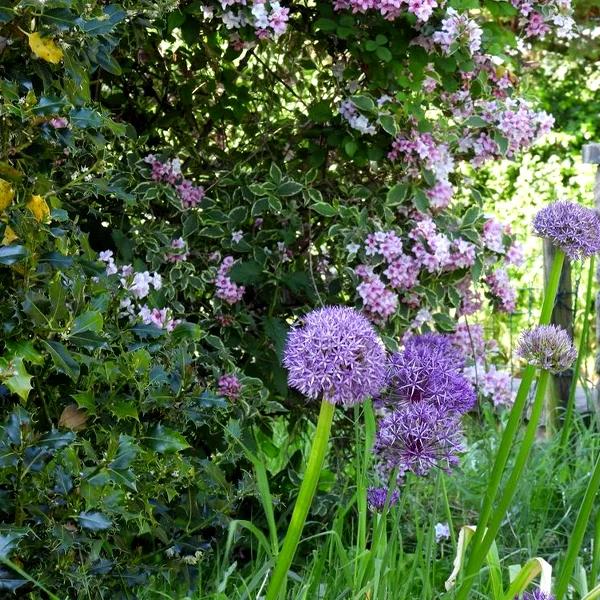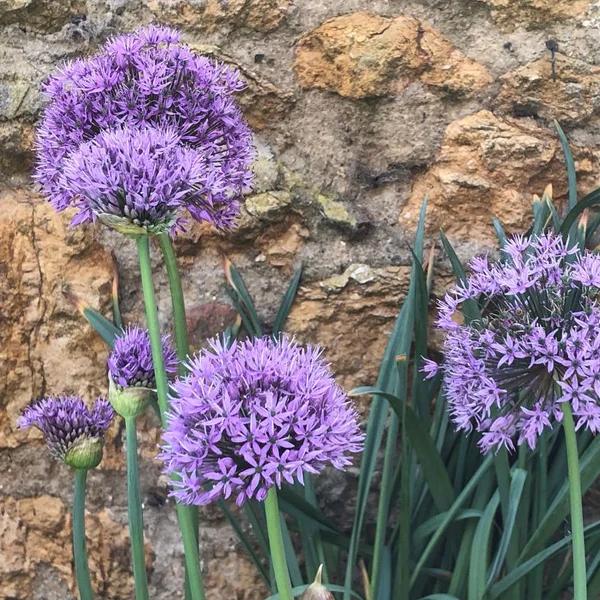Allium bulbs produce spectacular starburst flowers in late Spring and Summer, after the main flush of spring flowering bulbs.

Table of Contents
Planting Allium Bulbs
When to Plant Alliums
Autumn & early winter is peak dry bulb planting time.
The ideal months for planting Alliums are from September to mid-November, but as late as the middle of December is acceptable if the ground isn’t frozen.
Pot grown Alliums can be planted out in Spring, before they flower.
Where to Plant Alliums
With the notable exception of Sicilian Honey Garlic, which likes damp soil in shade, all alliums really need sun to flower well, with relatively deep, rich, well drained soil.
They tend to do well in rose beds or herbaceous borders. They will enjoy the annual mulch with everything else, but remember they originate from places with dry summer climates, so beds that get watered a lot may not be ideal.
The Planting Process
It is a good idea to plant soon after receipt. They are big bulbs and lose moisture relatively quickly when out of the ground. So prepare their planting site early.
Unless your soil is already very good, adding well rotted garden compost is one of the best investments you can make for a fabulous display in May and June.
As big bulbs, they are best planted in individual holes with a pinch of Bulb Starter Rootgrow at the bottom.
Planting depth is important; those big flower heads need to be well anchored. Plant Alliums at least three times as deep as the height of the bulb.
Which way up do I plant the Allium Bulb?
The top of the bulb is pointed: if in doubt, plant it on its side.
Planting Alliums in Pots and Containers
The pot should be deep, fairly large, and, crucially, the compost must be kept moist in the growing season.
Alliums are not great grown all by themselves: their leaves are fading and look relatively unattractive just as the flowers open.
A simple bulb lasagne with late flowering tulips look Spring Green or White Triumphator would look great.
Alliums After They Have Finished Flowering
- Remove the leaves when they have withered.
- Leave the flower heads in place for some extra ornamental value, or cut them for dried flower arrangements.
- Mulch in early spring.
- If flowering diminishes, it will be because they are overcrowded. Mark the clump in June so you can find it later, and then lift, divide and replant in September.
Some people lift their alliums every year, but to be honest I would not bother unless they are clearly unhappy and need moving elsewhere.
It takes about 4 years for a clump of mine to get too crowded and need dividing.

